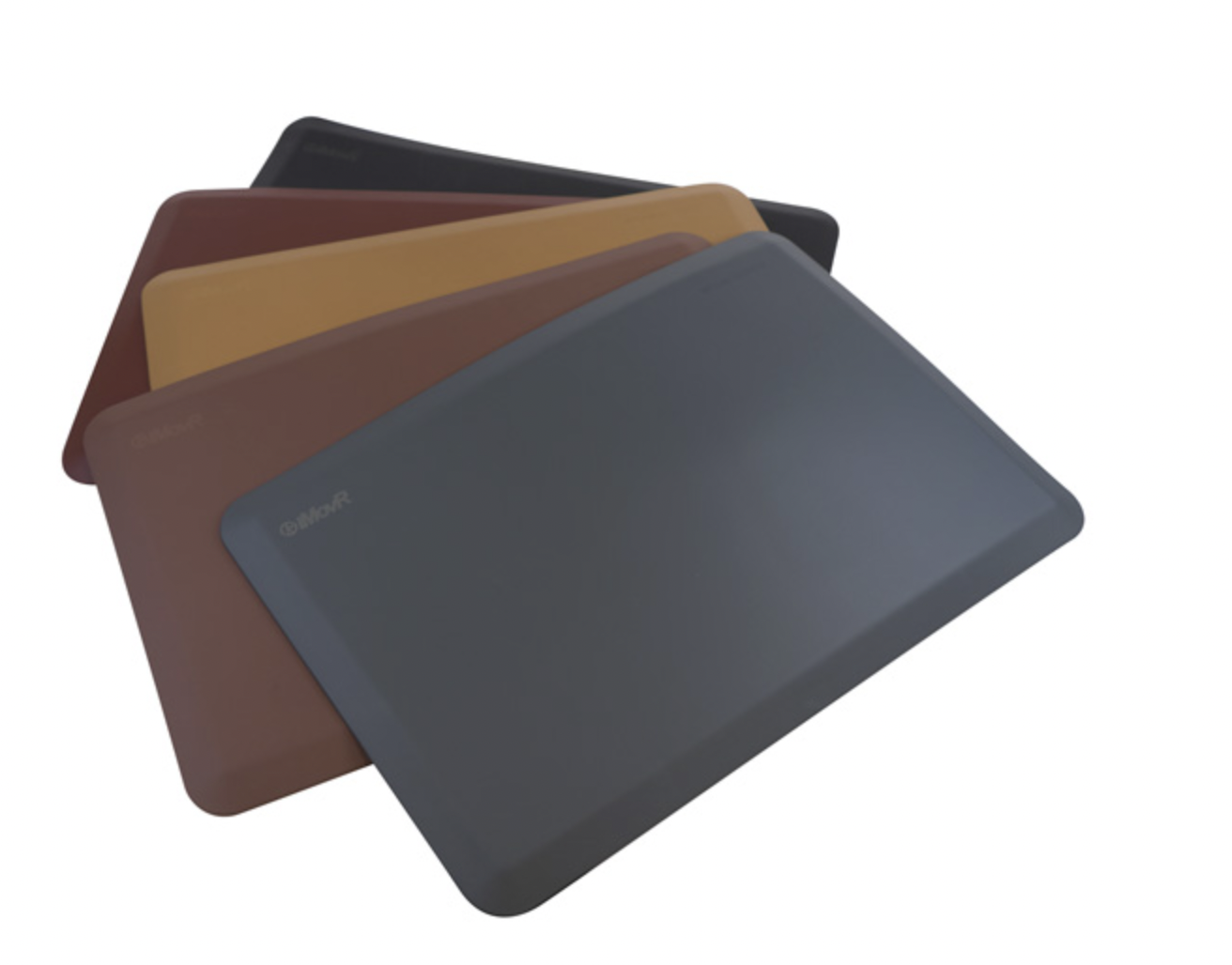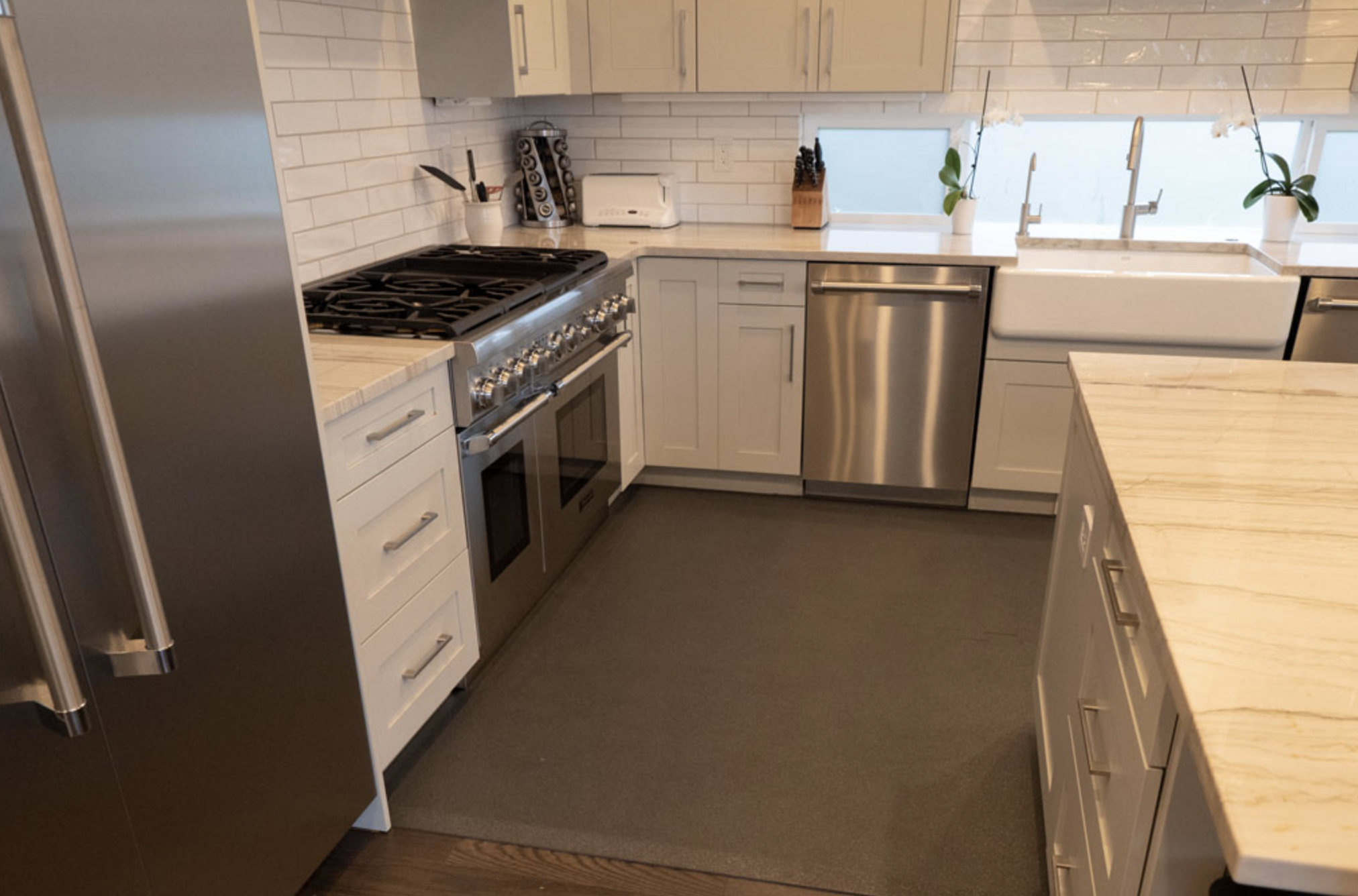Kitchen Essentials – Happy Feet with an Anti-Fatigue Mat
By Chef David
Everyone experiences foot fatigue at some time, characterized by aches or pains in their lower legs and feet. This exhaustion is a common complaint after a long day in the kitchen standing while preparing meals for Shabbos or Yom Tov. Not surprisingly, it affects people emerging from post-pandemic isolation, as well as athletes and shoppers. Spending long periods of time on your feet can be physically stressful.
What Causes Foot Fatigue
To discover what is stressing your feet, look down. Your most comfortable shoes might look good on the outside but show signs of wear inside. Weight gain increases the pressure on your knees and feet, each additional pound adds three to four pounds of pressure. Standing on a hard surface for a long period of time has been linked to back pain, as well as leg and joint aches. Inactivity is the source of the problem, your muscles need to be actively engaged, pumping blood.
Then, there is the floor itself. Kitchen floors are designed for easy clean-up. They are hard, made of ceramic tiles, linoleum, stone, or even hardwood. Softer cushioned flooring, like carpeting, do not belong in kitchens, they are difficult to clean, stain easily, and retain moisture. But there is a solution, commonly used in restaurants and bars, anti-fatigue mats. Anti-fatigue mats are designed to reduce stress on the lower part of your body, cushioning your feet, by displacing and suspending your weight.
What to Know When Shopping for an Anti-Fatigue Mat
An anti-fatigue mat is not the same as the cushy comfortable mat that sits beside your bed or the anti-stick memory foam bathroom mat. These mats are designed to be decorative. They protect your feet from the cold floor but are only intended for short periods of use. You want to select a kitchen mat that is durable and allows you to stand comfortably for hours.
Not all anti-fatigue mats are made the same, they come in different thicknesses and are made of a variety of materials including rubber, gel, foam, and polyurethane. When evaluating mats, consider their durability, compression factor, anti-microbial, and mold resistance, especially for kitchen use. Select a mat that is easy to clean and anti-skid, adhering to the floor, so you can focus on your knife skills. Choose a mat with tapered edges, this reduces your risk of falling when walking from the mat to the floor, which you will do often during food preparation.
Your mat should cover the space you commonly cook in, this gives you room to move. It does not need to cover your entire kitchen. A rule of thumb is to select a mat that is at least the size of your cutting board. My mat is 2’x3′ and covers the area I spend most of my time, the counter where I do my prep work.
The ideal mat should be ½” to ¾” thick to provide the necessary support. Test it. Stand on it. If you can feel the floor, reject it, this mat will not provide the support you deserve.
Some mats are so comfortable you may be inclined to go barefoot. If you like wearing shoes in the kitchen, continue doing so, shoes provide additional support and cushioning. Either way, the additional cushioning provided by the anti-fatigue mat makes standing for long periods easier on your feet. Using an anti-fatigue mat lets you effortlessly shift positions, you’ll find you are no longer standing in one position while you cook.
It Can Travel
Smaller anti-fatigue mats are portable. Mine is suitable for the kitchen but small and light enough to use as a standing mat at my computer, which is one of the other uses for an anti-fatigue mat. When moving the mat from place to place, consider cleanliness, the kitchen is inherently filled with spills and germs. I clean my mat and the floor to maintain a sanitary environment.
High Quality
My consideration in selecting the best anti-fatigue mat was to look for high-quality and proven results. This led me to iMovR, a commercial brand that provides consumer solutions. They are the preferred supplier of office fitness gear to thousands of corporate, government, and educational institutions. Their anti-fatigue mats complement their line of standing desks, which means they have a proven track record.
Hidden on their website is a listing for standing mats, which I discovered was exactly what I needed, an anti-fatigue mat. These mats are made of 100% polyurethane material, with exceptional quality, durability, and they are made in the USA. iMovR mats are designed for the kitchen, with an anti-microbial surface. They are resistant to wear, abrasion, staining, puncturing, tearing, and even chemical damage. In addition, they are good for the environment, made of 100% recyclable material. Because iMovR mats are designed to last, I won’t need to replace my mat often.
iMovR makes two versions of their standing mat. Both are grippy, stay flat on the floor, and have beveled edges that are gradually tapered. Their Premium mat is 6/8” thick while the Economy mat is 5/8″. Premium comes in a wide range of colors and sizes, it can be customized to fit your kitchen. The first point listed under product highlights says ‘Designed for all-day comfort at a standing desk—not a glorified kitchen mat’ impressive, and based on my feet, true.
iMovR is available for online orders.
Happy Feet
Now, I can whip up a storm in the kitchen without tired feet, and enjoy Friday nights without needing to get off my feet. All too often, we focus on cooking techniques, like knife skills, or designing a state-of-the-art kitchen, and overlook the little things, like foot comfort. A little mat can make a big difference. With the ability to customize it to fit your kitchen decor, you can have it all – fine food, style, and fatigue-free feet.








